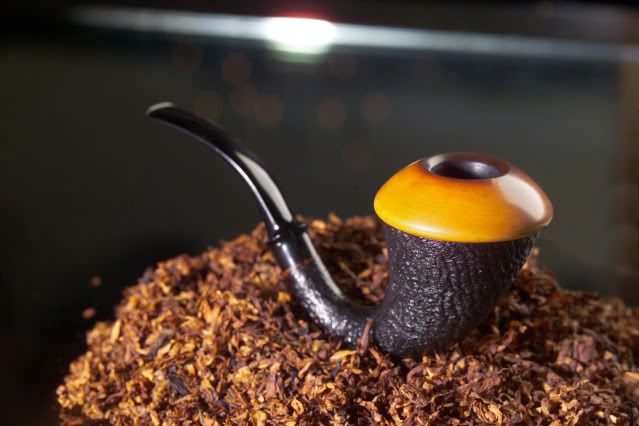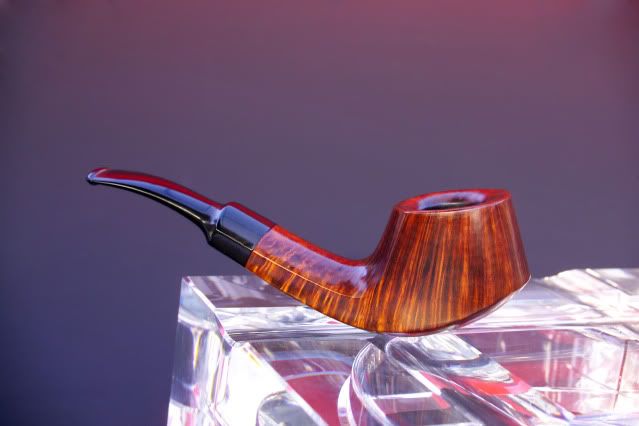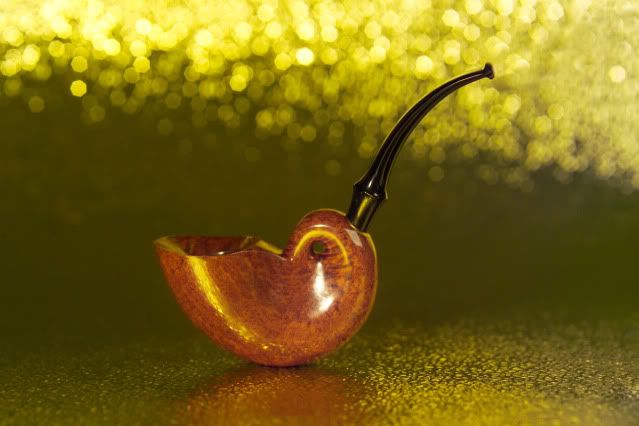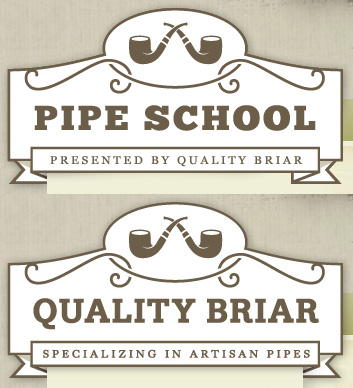
This question was recently posed on a particular pipe-smoking forum on which I am an active member. I thought it was an interesting question from the outset, and the result of the conversation was both unexpected and fascinating.
For those of you who don’t know, allow me to give you a brief biography of Bo Nordh and what this was even asked. If you do already know, feel free to skip down a little.
Bo Nordh was one of the revolutionary pipe makers, a statement that can hardly be denied even by his critics. Mr. Nordh was raised and lived in Sweden and made his first pipe shortly after graduating with a degree in machine-engineering. One of the first things that irritated him about those initial blocks, and something continued to influence his carving for years to come, was the amount of flaws found within the briar; it was simply unacceptable to Bo.

After selling his first pipes to Olle Jonsson, Bo was encourage to meet up with Sixten Ivarsson. To call Sixten a giant, despite his slightly diminutive appearance, would be an understatement. In this initial meeting, Sixten shared his knowledge of the minutiae with Bo, the little details required to make not only a beautiful, but also a functional pipe.
From that moment, Bo’s career continued to skyrocket, though he only made around fifty pipes a year. This low output came as a consequence with his obsession with quality. As we are told from grade-school onward: quality over quantity.
Bo drilled all of his pipes by hand and would always ensure that the shape that we was going to make matched the briar block. Much like many sculptors, Bo believed in inspecting the block of briar to see what shape was hidden inside and would then try to free it, rather than forcing the block to match the shape that he needed to make.
Many of you might be familiar with the Ramses shape, a shape that is known for being rather “high-end”, as you don’t often see many of them below the triple or quadruple digits. Well, you can thank Bo Nordh for that shape.
So, with that short biography out of the way, we must return to the initial question: Do I aspire to own a Bo Nordh pipe? Yes, I do.
Bo Nordh is an incredibly important figure in the pipe world, not only creating one of the most beautiful shapes, in my mind, but also carver some incredible works of art. His dedication to quality over quantity and his desire to work with the briar resulted in pipes that would shine in even the greatest of collections.

I was surprised to find that I was in the minority when I expressed this opinion on that particular online forum, and it seems to me that a lot of people got caught up by the word “aspire”. People seemed willing to admit that they wanted a Bo Nordh, but did not aspire to own one.
I hate to do this, but my time in my many college English classes leaves me no choice: I have to go to the dictionary. Merriam-Webster defines “aspire” as “to seek to attain or accomplish a particular goal”, while some synonyms are: crave, desire, hope, venture, want, yearn.
The word “want” is defined as to “have a desire to possess or do (something)”. So, the definitions for “want” and “aspire” seem very similar. The only real difference is that one involves the word “seek” and one involves “desire”. Well, if you look at the synonyms for “aspire”, you will see that “desire” is listed among them. Thus, it would be appropriate to rephrase the definition of “want” as to “have an aspiration to possess or do (something)”. Thus, wanting to own a Bo Nordh and aspiring to own a Bo Nordh are much closer than people give them credit.
With all of these, I find myself returning to the same answer: I do seek to attain a Bo Nordh pipe; I do want one, crave one, desire one, hope that one day I can own one. I was perplexed by the fact that this was not the overwhelming answer.
In the interest of fairness, I should inform those of you who don’t know as to why so many people probably refused to say that the aspire to own one. In 2006, Bo Nordh passed away, an occurrence that drove the high price for his pipes even higher. It is not terribly unusual to find Bo Nordh’s pipes selling for between $15,000 and $25,000. Clearly, this is a lot of money for anything, let alone a pipe.

Pipes are luxury items and certainly should not be causes for mortgaging the house or, in my case, giving up my college education.
However, here is where my semantic issue with the nay-sayers comes into play. Aspiration and likelihood are in no way related. I can hope and crave and desire a Bo Nordh pipe as long as I want, but that does not mean that I was sell my soul for one the moment one becomes available. Simply because I have an aspiration does not mean I instantly lose my self-control or my brain.
If, however, I ever found myself in the situation where such money became chump-change, I would hold my chances of acquiring a Bo Nordh pipe as much more likely, after I started some sort of foundation or charity.
Of course, there are other means of acquiring pipes aside from flat out paying their ticket price. Trading pipes is one option. If I were to trade ten pipes of mine, I could certainly hack a large portion of the price off of a Bo Nordh. Will I do that if the opportunity presents itself? It is hard to say, since I don’t know what situation my life will be in if and when it eventually does present itself. Maybe I will, maybe I won’t. An aspiration is not an infatuation. It is a yearning, not an obsession.

I certainly hope that I get the chance to make that decision one day. I also hope that, when that chance comes along, I am able to say yes without causing financial distress to myself or to others whom I care about,and then I will be able to check that goal off of my list. If not, then I will just have to keep chugging along towards that goal.
But, hey, it’s always good to have goals, isn’t it?


 Subscribe to RSS feed
Subscribe to RSS feed
Great to see you blogging here, Ethan.
I’ve seen this question talked about elsewhere, but I like your take on it. To obsess over pipes like a lot of us do and not aspire to own a Bo Nordh makes no sense to me, either. Heck, from time to time I replay the Bo Nordh Dublin YouTube posted by Quality Briar in its Rare Estates section just for the pleasure of seeing that unsmoked vessel. Wow.
In my mind I’ve kind of reframed the aspire-to-Bo-Nordh question. For me it’s become, “If you ever accumulate pipes with a combined trade value equivalent to a Bo Nordh, would you trade all but a very few of your current pipes for one Bo Nordh?” It sounds like you would. I think I would, too.
I came to this article quite by accident, after having stumbled upon the Bo Nordh name and puzzling that I had never heard of his pipes even after 45 years of pipe smoking. Not surprising perhaps as my humble 3d world origin have kept me from the upper layers of the social stratosphere and reluctant to pay for a vessel or vial more than its purpose warrants. For me a $3k watch is beyond justification, the finest wine cannot be appreciated any more in a $300 glass than in a $15 one of the same shape.
I don’t come from a poor family, by the standards of my country, and had the fortune of decent education since my earliest childhood; however my parents were always adamant in drawing the line between quality –in the utilitarian sense: purpose, function and durability- and luxury and pose. In my home, books were aprreciated, jewelry was not. Much as I admire the beautiful pieces of Herr Nordh and his personal history of dedication and disciplne, I cannot but frown on the value assigned to them by collectors who have more money than they can use intelligently.
In a world suffering of poverty, misery even, the spleen of shedding $25000 for a museum piece to be displayed behind a glass cabinet is -frankly- insulting. Any intelligent and educated human being knows that surplus wealth comes at the expense of the less fortunate half (half? 90%!) of humanity.
As I type this diatribe (sure to throw stones on the “WASP” nest), I’m enjoying a fine commercial blend out of a $10 tin on a $50 cob modded with a decent stem. I couldn’t dream of lighting a $25000, or even a $5000 pipe! IMHO those belongs in an exhibition or museum.
I wonder if the man had made tools, would one pay $2000 for a screwdriver? A tool is a tool, again in my humble opinion, and good quality is sufficient as it serves its purpose. To admire, yes; to use? Hmmmm!…
Congratulations to those fortunate enough to own those extravagances! Sleep tight.
I’m one of the ones who doesn’t! Whereas I think they are works of art and Bo’s sense of perfection is to be admired, I have no taste for the Danish pipes (I’m a traditional Brit. Codger).
My aspiration, however, would be to see Ethan acquire one!